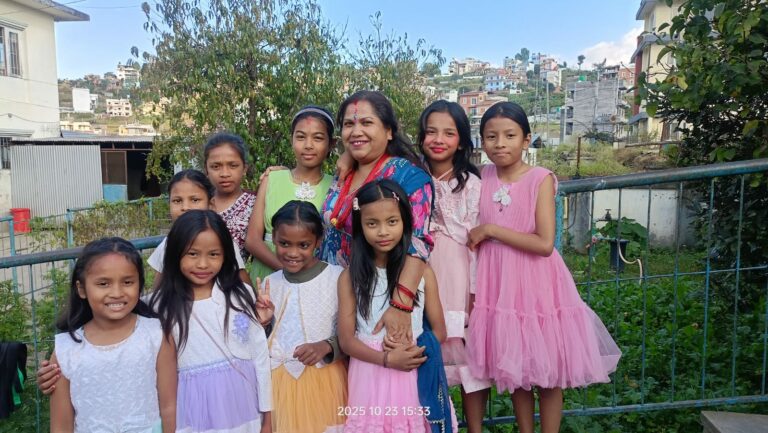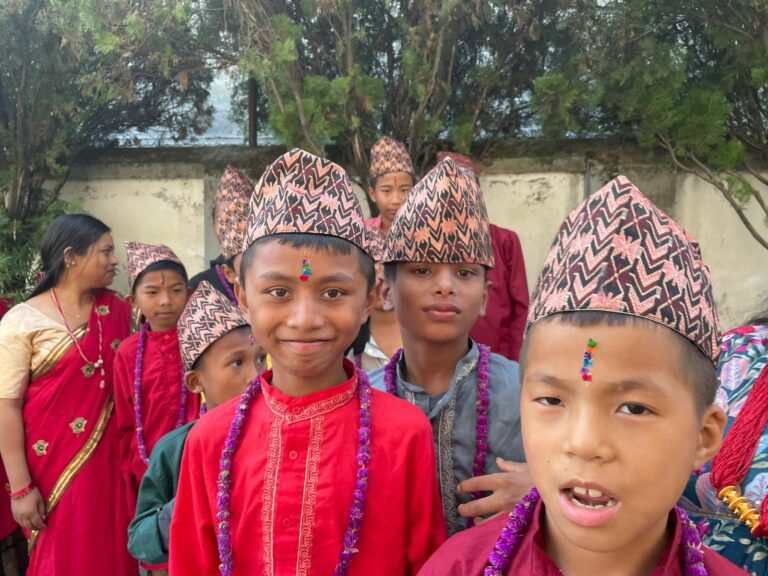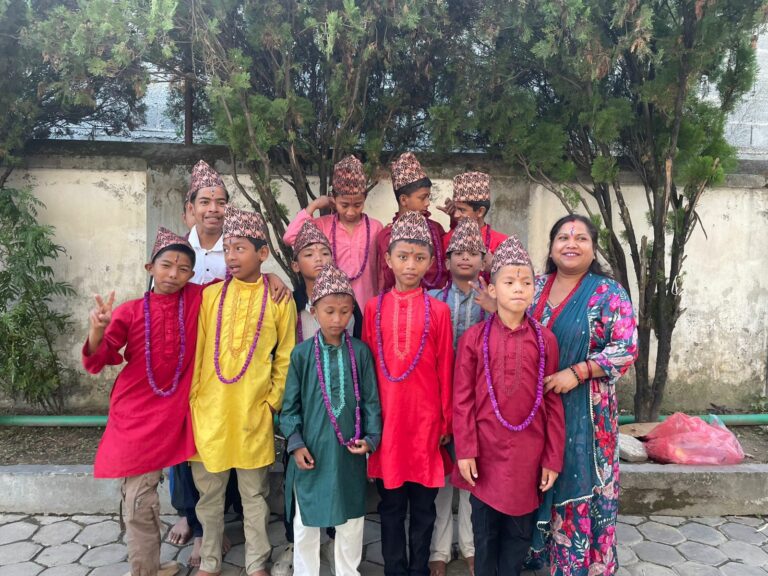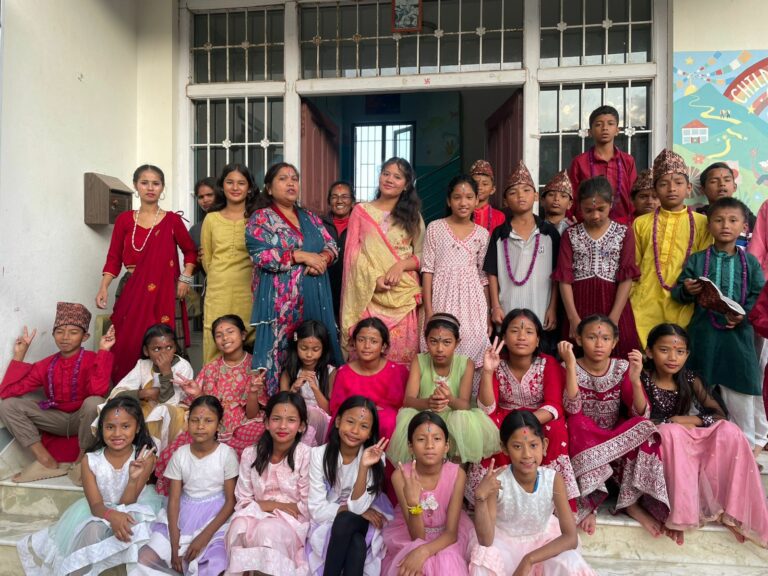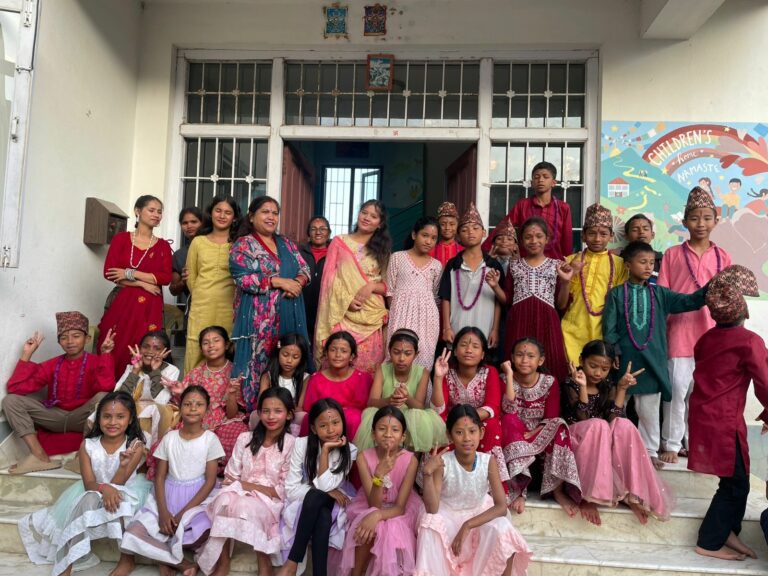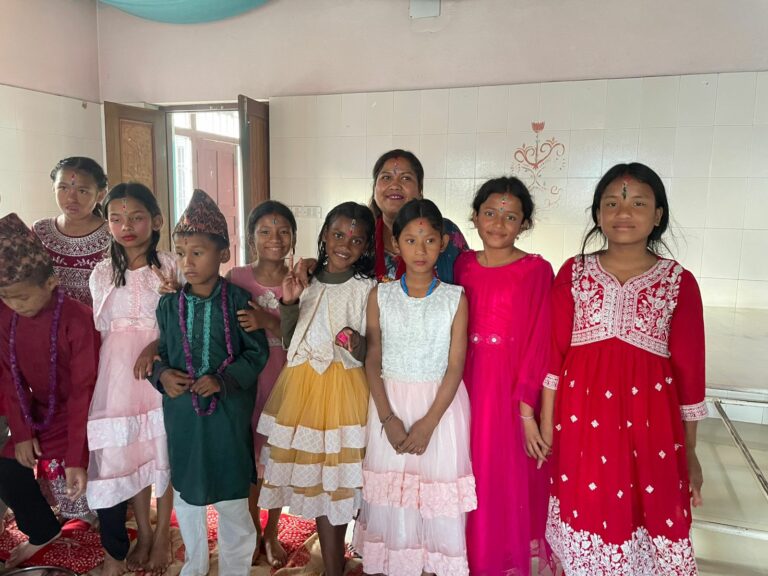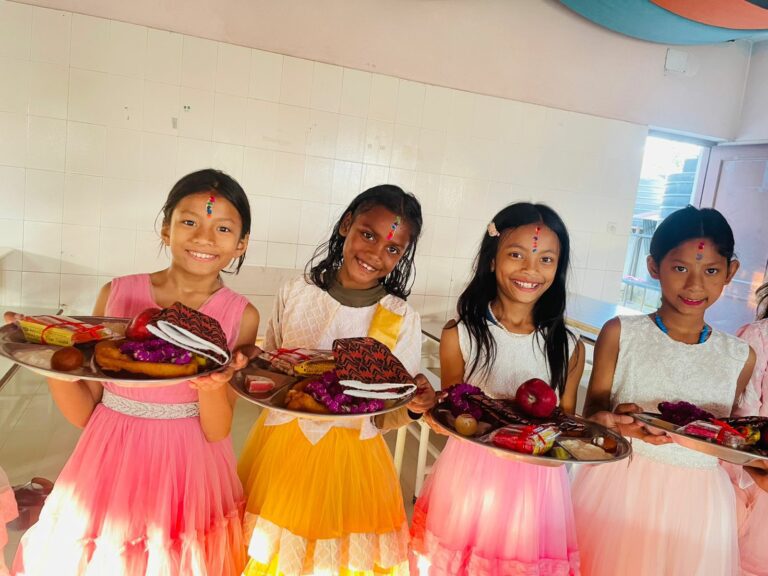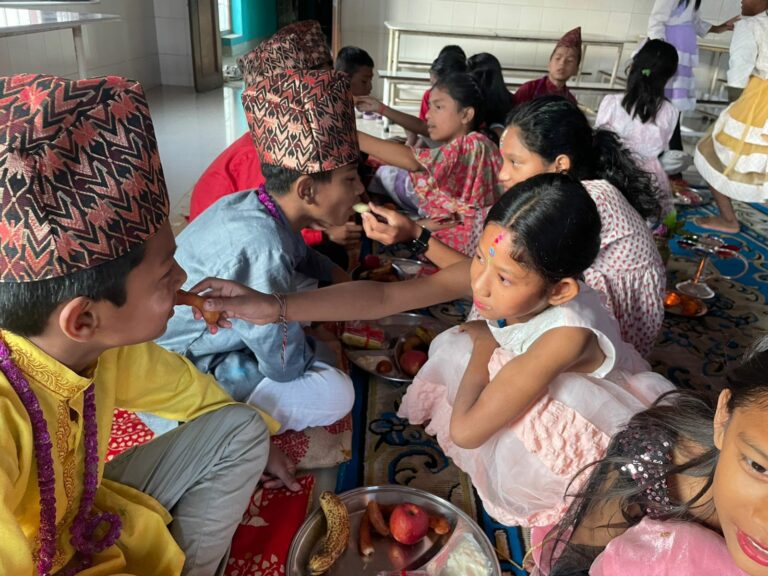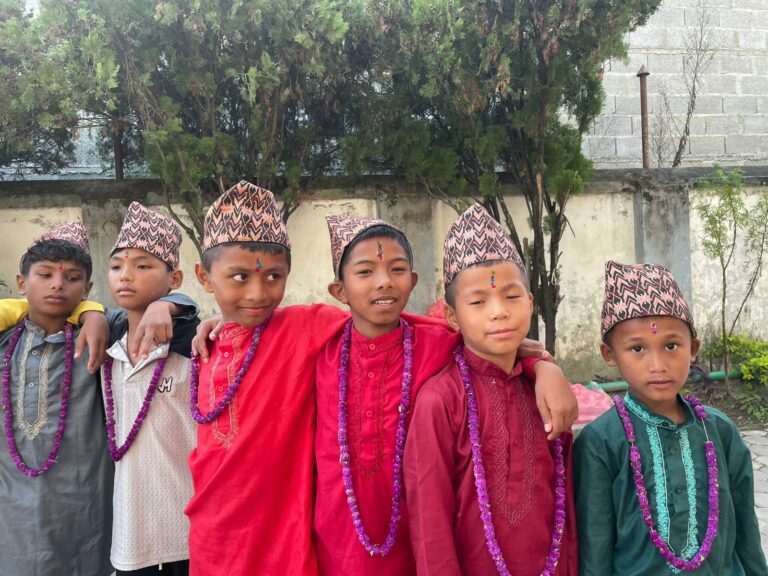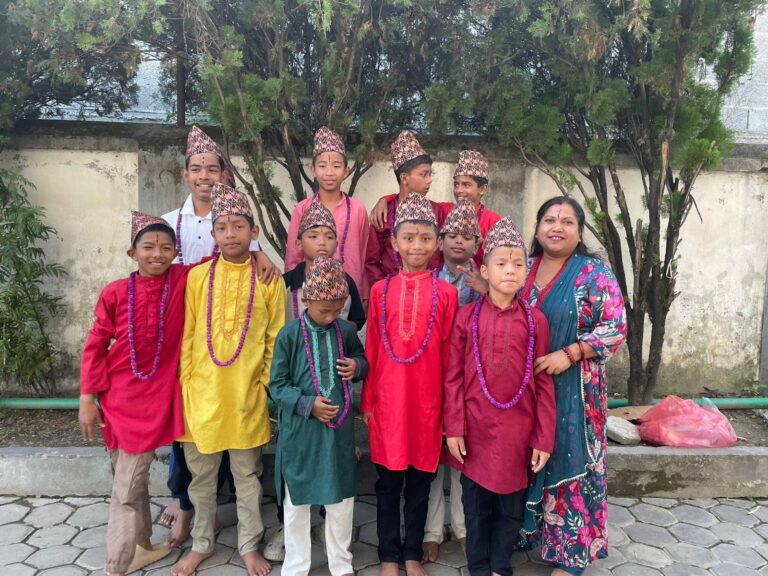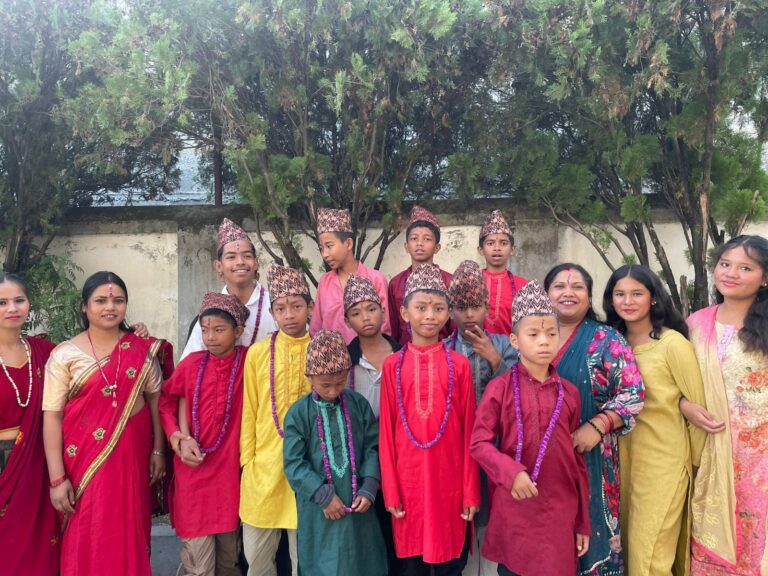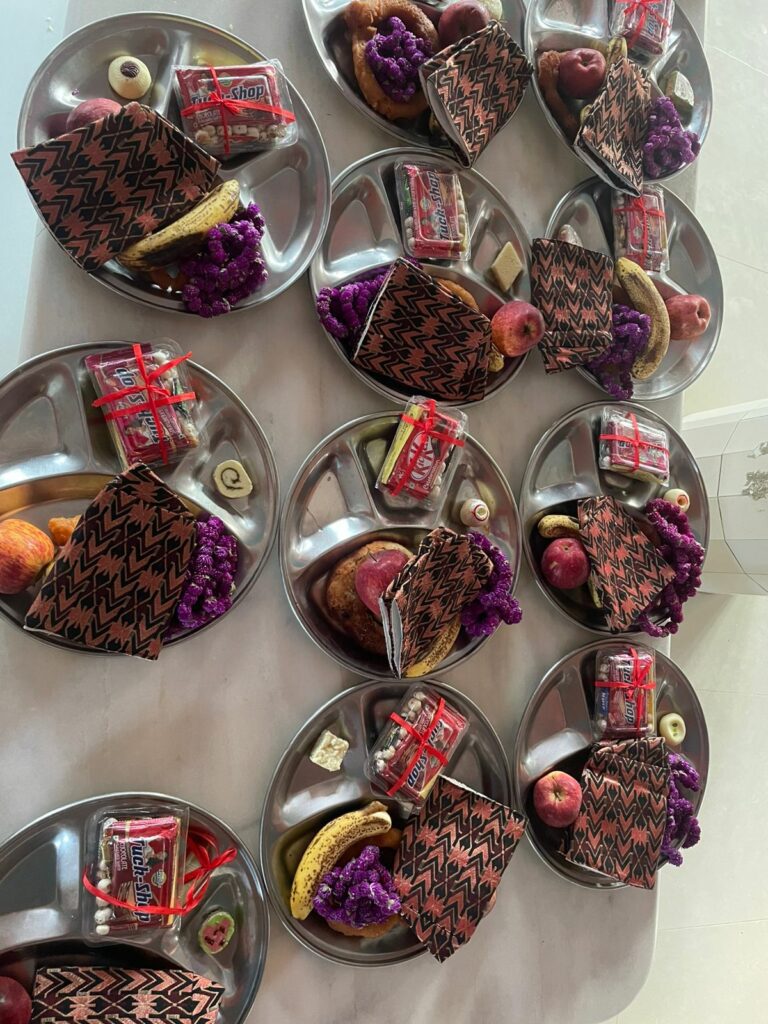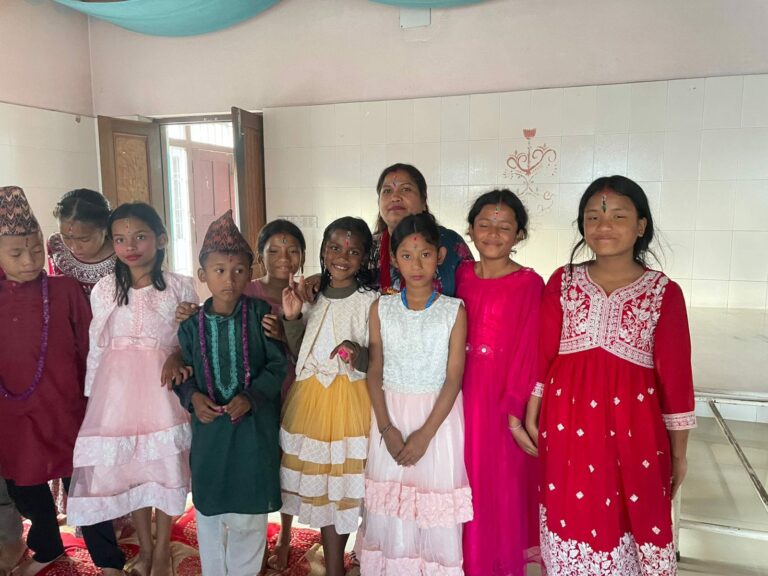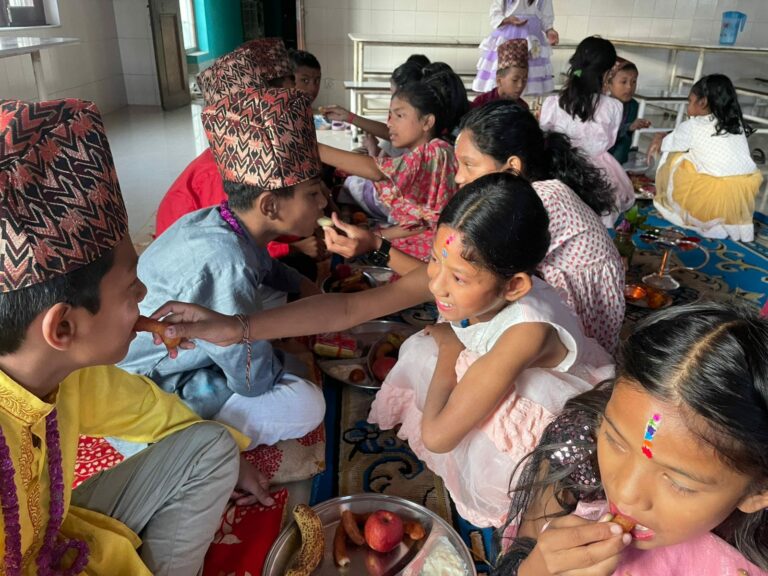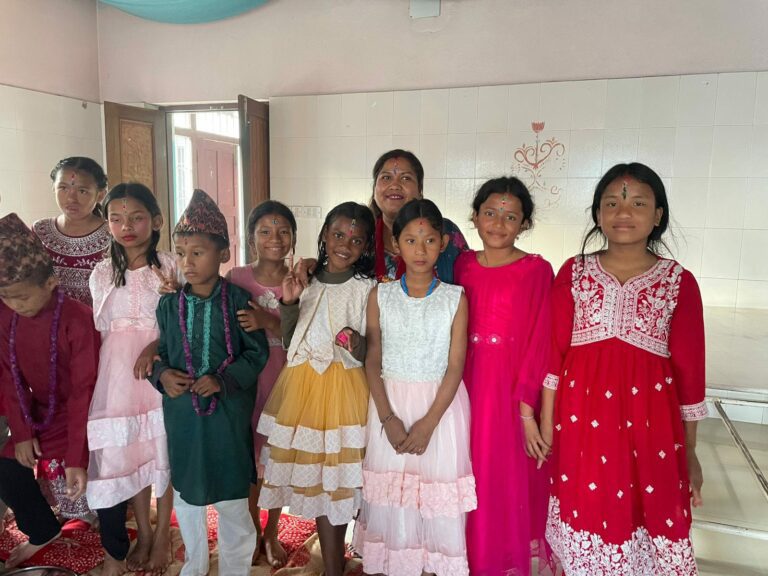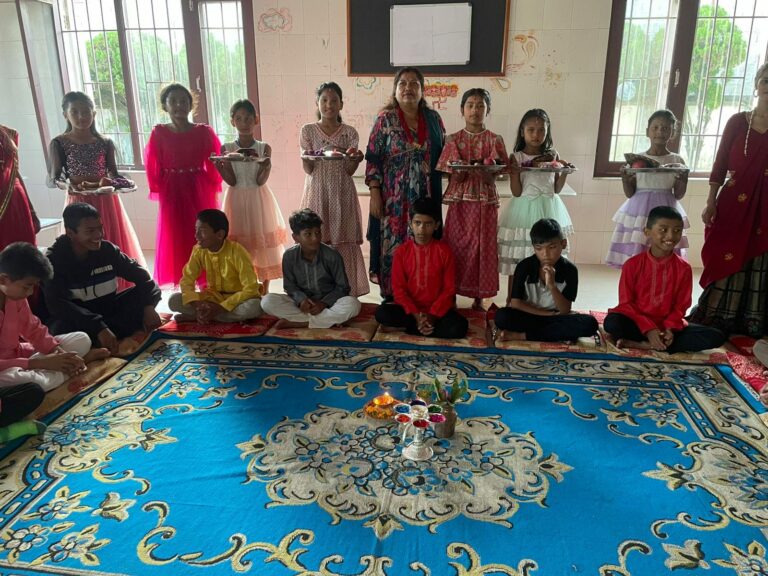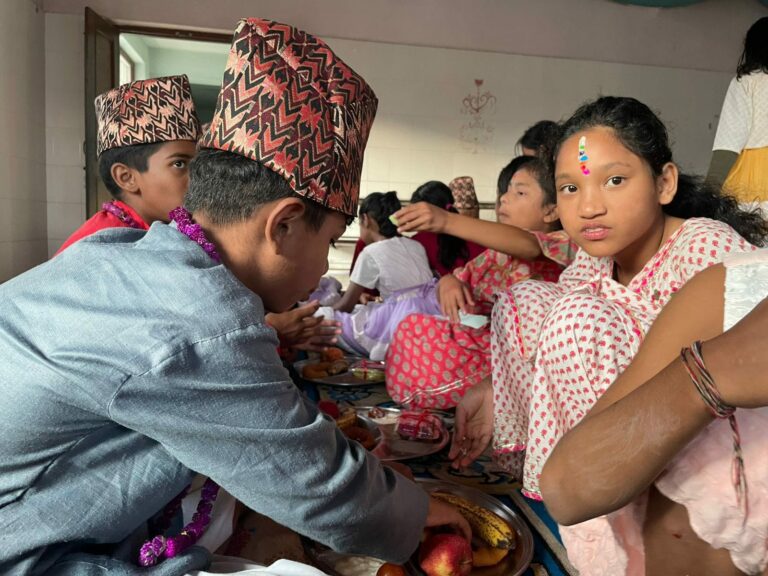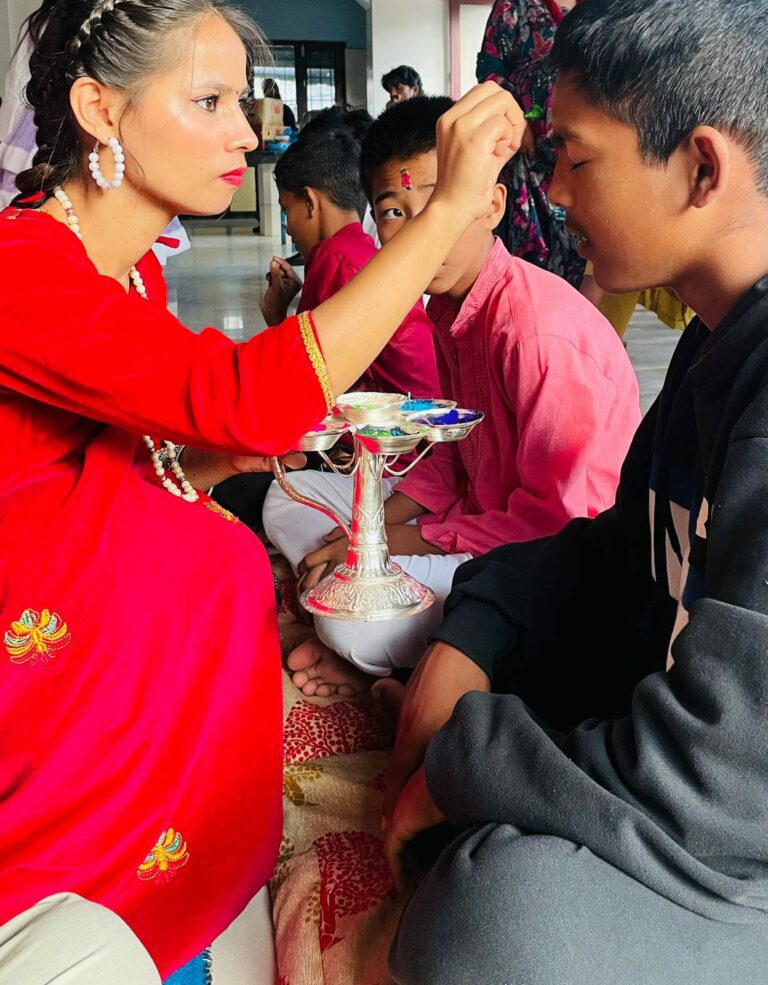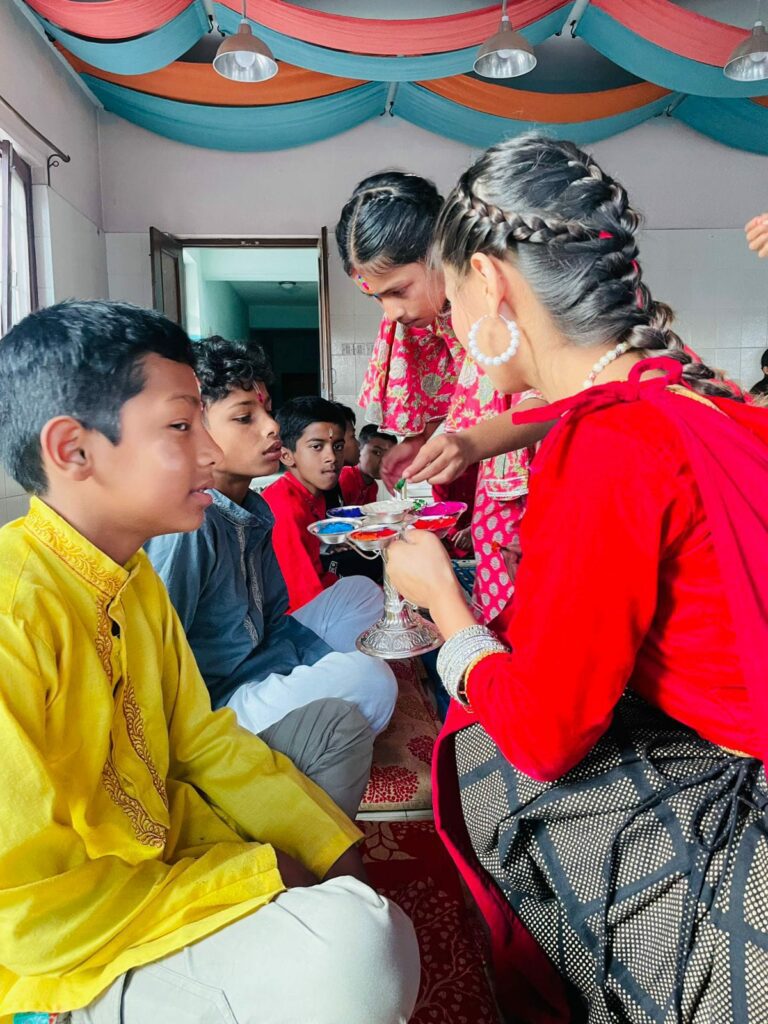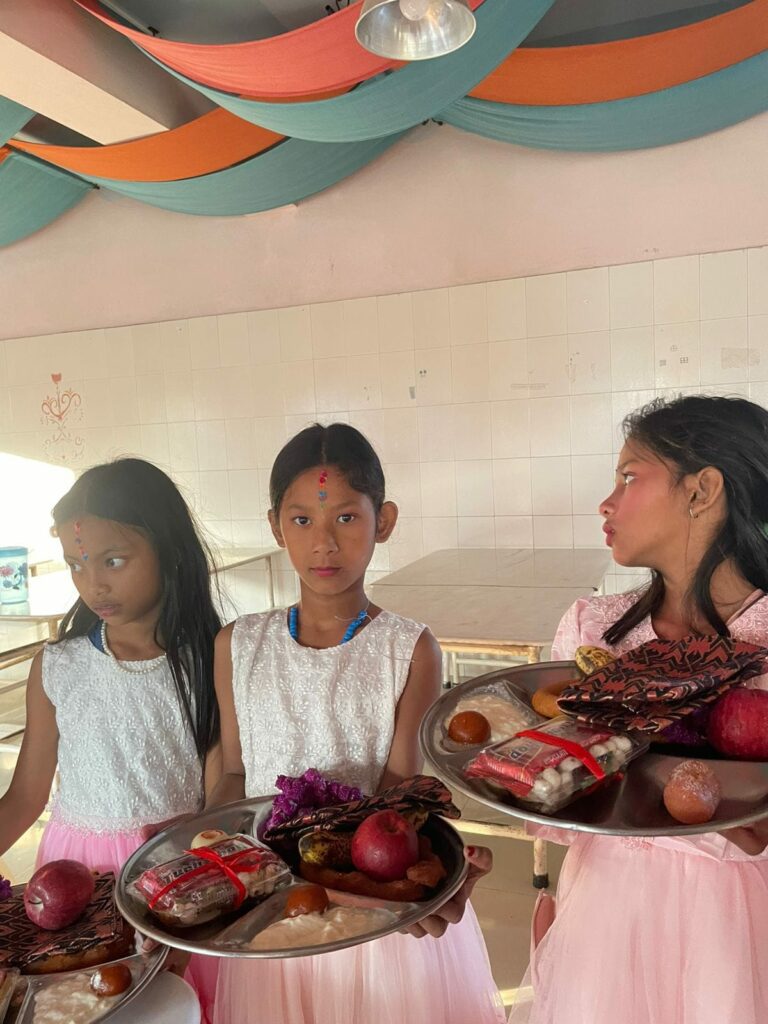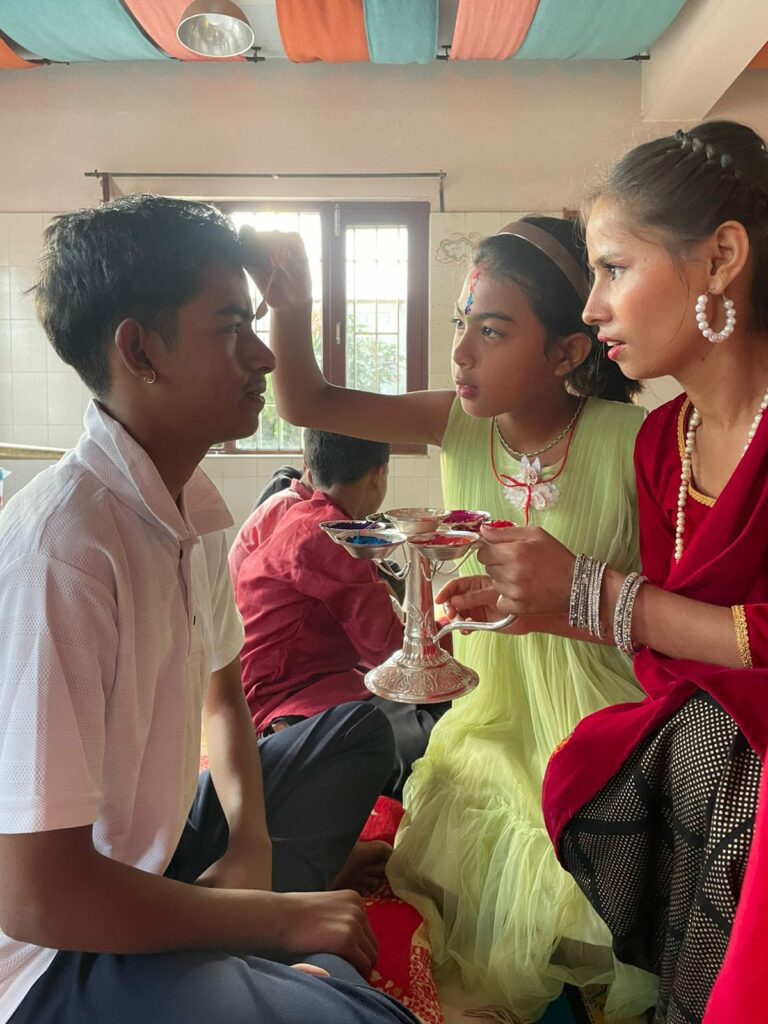The festival of Tihar, also known as Deepawali or Yama Panchak, is one of the most colourful and joyous festivals celebrated across Nepal. It is a time when homes are illuminated with oil lamps, colourful rangolis decorate courtyards, and hearts are filled with happiness, love, and gratitude. At Children’s Home, this festival holds a special place as it brings together all the children and staff members in a spirit of unity, family, and devotion. This year’s celebration of Laxmi Pooja and Bhai Tika was filled with warmth, laughter, lights, and deep emotional connections that made the festival memorable for everyone.
As Tihar approached, the atmosphere at Children’s Home started to buzz with excitement. The children and staff began preparations several days in advance. The entire home was cleaned, decorated, and prepared to welcome Goddess Laxmi, the goddess of wealth and prosperity. The younger children took charge of decorating the living areas with colourful papers and flowers, while the older ones helped arrange diyas and prepare the materials for rangoli.
On the evening of Laxmi Pooja, the courtyard of the home transformed into a vibrant celebration spot. The children worked together to create a beautiful rangoli made with colourful powders in pink, green, yellow, and white hues. In the center of the rangoli, small clay lamps (diyas) were lit, radiating a warm glow that illuminated everyone’s faces. The rangoli beautifully depicted the festive spirit and the creative talents of the children. Written across the design were the words “शुभ दीपावली” (Shubh Deepawali), expressing a heartfelt wish for a happy and prosperous festival.
The sight of the glowing diyas, the colourful rangoli, and the children’s happy faces brought a feeling of harmony and joy throughout the home. The staff members guided the children in preparing offerings for the pooja flowers, incense, sweets, fruits, and the sacred items used to worship Goddess Laxmi.
The staff explained the significance of Laxmi Pooja, reminding everyone that cleanliness, honesty, and gratitude attract wealth and positivity, not just material wealth but also emotional and spiritual prosperity. The children listened attentively and participated in chanting the prayers and lighting diyas.
To conclude the evening, sweets and fruits were distributed among the children, and everyone shared a special festive meal. Music and dance followed, with children performing songs and dances related to Tihar. The rhythmic sound of madal, clapping, and singing brought joy to everyone’s hearts. It was truly a night to remember.
Two days after Laxmi Pooja comes Bhai Tika, one of the most emotional and heartwarming days of the Tihar festival. It celebrates the sacred bond between brothers and sisters. On this day, sisters pray for their brothers’ long life, happiness, and prosperity, while brothers promise to protect and support their sisters.
At Children’s Home, this tradition was beautifully adapted so that every child could participate, whether they had siblings or not. The older girls prepared the pooja items colourful tika powders (red, yellow, green, blue, and white), garlands made of sayapatri (marigold) and makhamali flowers, sweets, and gifts. The boys helped in setting up the space and arranging chairs and mats.
When the ceremony began, the girls applied the seven-coloured tika on their brothers’ foreheads, symbolizing blessings from nature and divine protection. Each tika colour carried a special meaning red for energy, yellow for wisdom, green for peace, blue for strength, white for purity, orange for prosperity, and pink for love. The boys, in return, put tika on their sisters’ foreheads and offered small gifts or sweets as a token of love and appreciation.
The children who did not have biological siblings also participated by exchanging tika and blessings with one another, reinforcing the sense of unity and togetherness that defines Children’s Home. The staff members also joined in the ritual, adding to the warm, familial atmosphere.
After the tika ceremony, everyone enjoyed a grand festive lunch together. The menu included traditional Nepali dishes such as sel roti, pulao, meat curry, achar, and various sweets. The dining area was filled with laughter, chatter, and the sound of music playing in the background. It was a true family moment for everyone.
The Laxmi Pooja and Bhai Tika celebrations at Children’s Home were a beautiful expression of unity, love, and cultural pride. The bright lights, colourful decorations, traditional attire, and shared moments of worship and laughter made the event memorable for everyone. It was not just a festival but a reminder of the importance of togetherness, gratitude, and hope.
The glowing diyas symbolized not only the triumph of light over darkness but also the collective strength and positivity that shines within the Children’s Home family. The rangoli represented the creativity and teamwork of the children, while the Bhai Tika ritual showed the unbreakable bond of love and care that connects everyone, regardless of blood relations.
As the day came to an end, the smiles on the children’s faces reflected the true spirit of Tihar joy, harmony, and love. The festival once again strengthened the feeling that Children’s Home is not just a place to live, but a family that celebrates every moment of life together.
